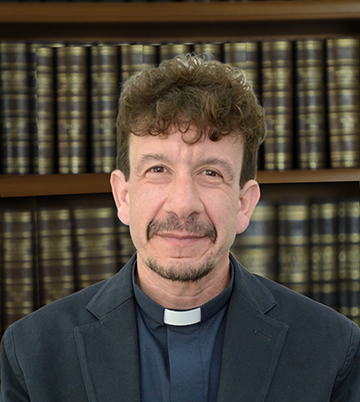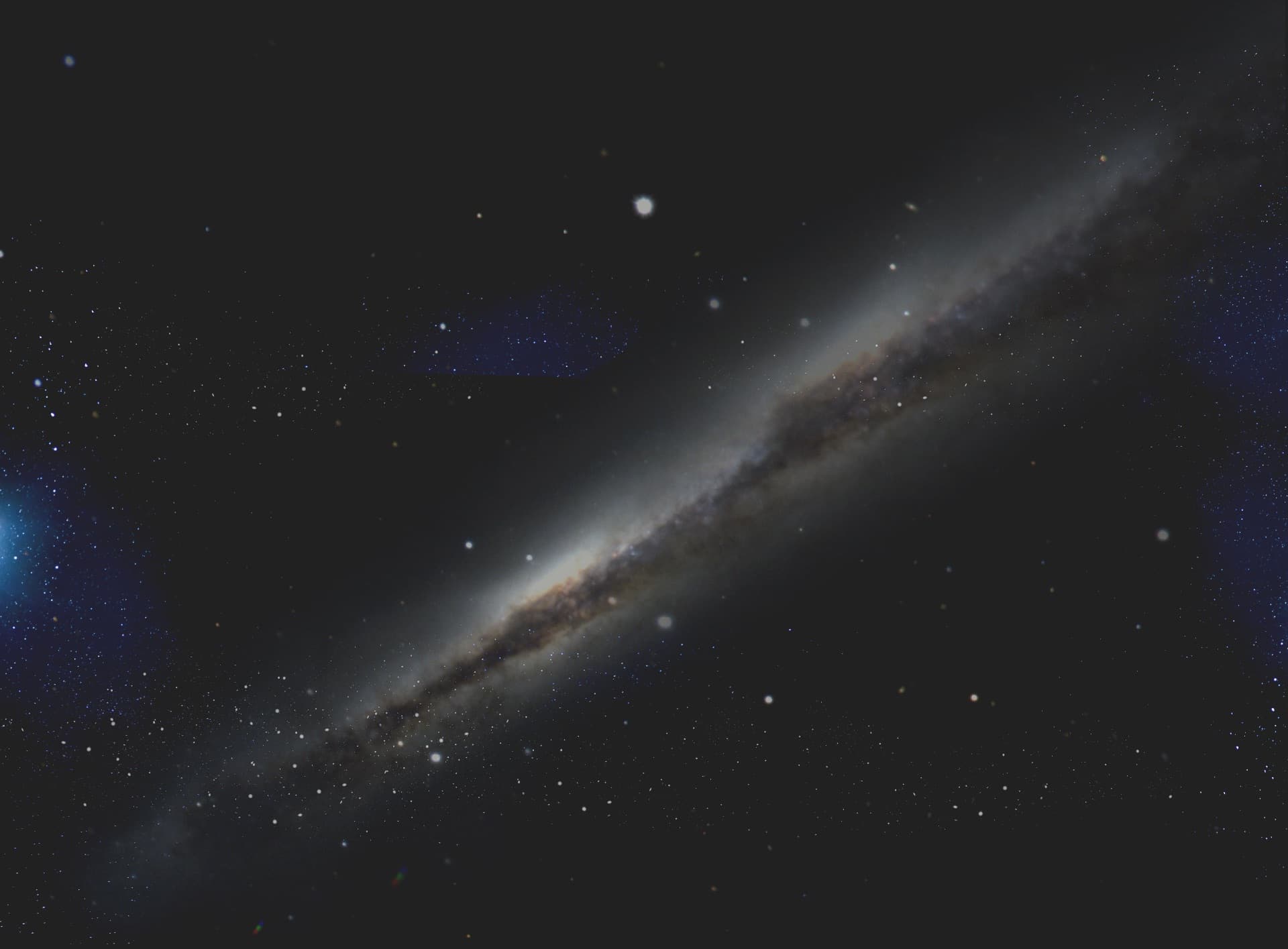Education
- B.A. in Theology – Facultés jésuites Centre Sèvres of Paris. (2022)
- Ph.D. in Particle Physics – Karlsruhe Institute of Technology (KIT). (2009)
- Master in Particle Physics – University of Rome La Sapienza and Frascati National Laboratory (LNF). (2004)
- B.A. in Philosophy – Salesian Pontifical University of Rome. (2000)
ACADEMIC APPOINTMENTS
11/2020 – 11/2021 Visiting Researcher. University College of London, School of Physics and Astronomy.
10/2013 – 9/2017 Senior Research Fellow. University of Edinburgh, School of Physics and Astronomy.
04/2011 – 09/2012 Postdoctoral Researcher. University of California Los Angeles (UCLA), Physics & Astrophysics Department.
04/2009 – 03/2011 Marie Curie Initial Training Network Fellow (FP7 grant). CERN, Physics and Detector Technology group.
FELLOWSHIPS, GRANTS and AWARDS
01/2015 – Senior Experimental Fellowship grant awarded by the Institute of Phenomenology and Particle Physics (IPPP)-Durham
10/2012 – Dean of Faculty Fellowship from the Dean of the Physics and Astronomy Department of the Weizmann Institute of Science.
04/2009 – Marie Curie grant from the EU-FP7 Programme; individual budget from the European Community for two years at CERN.
Background
Paolo Beltrame SJ was born in 1976 in Rome, Italy. After high school with the Salesians, Beltrame studied particle physics at Rome’s La Sapienza University (one of his professors was Nicola Cabibbo, known for his contribution to the quarks model with the «Cabibbo angle»). Beltrame graduated with a master’s degree in physics in October 2004, after also obtaining a bachelor’s degree in philosophy at the Salesian Pontifical University.
His main interests focus on high energy physics, particle physics and cosmology, especially in what is commonly called the «dark sector» of the universe.
In early 2005, Beltrame was admitted to the Ph.D. course in particle physics at the Karlsruhe Institute of Technology, working on the phenomenology and measurement of the muon magnetic moment anomaly known as g-2. In 2009, he received his PhD in Particle Physics. In the same year, he moved to Geneva to work at CERN, collaborating on the LHC (Large Hadron Collider) experiments that led to the discovery of the Higgs Boson in 2012.
Having developed an interest in astrophysics and dark matter, he moved to the USA, to Los Angeles, with a post-doctoral contract to work there for two years. During this stay, he developed a theoretical model that hypothesized dark matter as consisting also of lighter particles than those most studied, called «axion-like» particles, the existence of which could also explain several phenomena in high-energy physics. Statistical models used to analyze experimental data have also been of great interest to Beltrame, even encroaching on more epistemological issues from fundamental research. This path then led him to collaborate with the Weizmann Institute of Science in Rehovot, Israel, where he moved in 2013. At the end of the same year, he was offered a faculty position at the University of Edinburgh to work specifically on axions and new models of statistical analysis, which also led him to work more closely with the Faculty of Philosophy at the same university. Let us recall that Edinburgh has seen Max Born, one of the fathers of Quantum Mechanics, and Peter Higgs as eminent figures on its staff.
In 2014 he met the Jesuits of the Lauriston Centre in the Scottish capital and in 2017 joined the British Province of the Society of Jesus, beginning his novitiate in Birmingham, where he professed vows in September 2019. Immediately afterwards, Beltrame moved to Paris to study theology at the Centre Sèvres, where he obtained a bachelor’s degree in theology, discussing the concept of creation according to the Dominican tradition of St Thomas Aquinas and the Franciscan tradition of St Bonaventure, also in the light of the latter’s «panentheistic» perspective, and of Jürgen Moltmann and Pierre Teilhard de Chardin. Panentheism interprets God as both immanent and transcendent in creation, and the cosmos not as a reality external to the Creator but rather as an entity contained within the divine womb. Since September 2022, Beltrame has been assigned for his regency two years of postdoctoral research at the Vatican Observatory in Tucson and at the University of Arizona Tucson to work at the Arizona Cosmology Lab.
RESEARCH INTERESTS
The universe that we can observe, even with the most powerful telescopes available to us, constitutes about 5% of everything that exists in the cosmos, the remaining 95% being part of what we call the «dark sector» of the universe, of which about 68% is dark energy and 27% dark matter. Now, if we were asked what dark matter is, our most honest answer would have to be: we don’t know. However, we know very well what it is not. It is not normal matter, which we can observe, because it neither emits nor absorbs electromagnetic radiation (otherwise known as light), and it very rarely interacts with the normal atoms of which we are made. Even more enigmatic is dark energy, which is responsible for the accelerated expansion of the universe and which Einstein himself, the first to introduce it under the name of the «cosmological constant», described as his greatest mistake.
Trying to shed some light on these two immense mysteries concerning the cosmos – from its origin to the present day – is an exciting journey that will necessarily lead us to discover an ever more surprising God.
RECENT SCIENTIFIC PUBLICATIONS
- First Dark Matter Search Results from the LUX-ZEPLIN (LZ) Experiment, LUX-ZEPLIN Coll., arXiv:2207.03764 (2022).
- Enhancing the sensitivity of the LUX-ZEPLIN (LZ) dark matter experiment to low energy signals, LUX-ZEPLIN Coll., arXiv:2102.11740 (2021).
- Projected sensitivity of the LUX-ZEPLIN (LZ) experiment to the two-neutrino and neutrinoless double beta decays of 134Xe, LUX-ZEPLIN Coll., arXiv:2104.13374 (2021)
- KLASH Conceptual Design Report, D. Alesini, D. Babusci, P. Beltrame S.J., et al., arXiv:1911.02427 (2019).
- The LUX-ZEPLIN (LZ) Experiment, LUX-ZEPLIN Coll., arXiv:1910.09124 (2019).
- Extending light WIMP searches to single scintillation photons in LUX, LUX Coll., Phys. Rev. D 101, 042001 (2020), arXiv:1907.06272.
- Results from a search for dark matter in LUX with 332 live days of exposure, LUX Coll., arXiv:1608.07648 (2016).
- Improved WIMP scattering limits from the LUX experiment, LUX Coll., Phys. Rev. Lett. 116, 161301 (2016), arXiv:1512.03506.
- LUX-ZEPLIN (LZ) Conceptual Design Report, LUX-ZEPLIN , arXiv:1509.02910 (2015).
- Physics potential of a long-baseline neutrino oscillation experiment using a J-PARC neutrino beam and Hyper-Kamiokande, Hyper-Kamiokande Coll., Prog. Exp. Phys. (2015) 053C02.
- Dark matter search in a Beam-Dump eXperiment (BDX) at Jefferson Lab, BDX Coll., arXiv:1406.3028 (2014).
- First axion results from the XENON100 experiment, XENON100 , Phys. Rev. D 90 (2014) 062009.
- Limits on spin-dependent WIMP-nucleon cross sections from 225 live days of XENON100 data, XENON100 , Phys. Rev. Lett. 111 (2013) 021301.
- Expected Sensitivity to Galactic/Solar Axions and Bosonic Super-WIMPs based on the Axio-electric Effect in Liquid Xenon Dark Matter Detectors, K. Arisaka, P. Beltrame et al., Astropart. Phys. 44 (2013) 59-67.
- Dark Matter Results from 225 Live Days of XENON100 Data, XENON100 , Phys. Rev. Lett. 109 (2012) 181301.
- Analysis of the XENON100 Dark Matter Search Data, XENON100 , Astropart. Phys. 54 (2014) 11-24.
- A New Analysis Method for WIMP searches with Dual-Phase Liquid Xe TPCs, Arisaka, P. Beltrame, et al., Astropart. Phys. 37 (2012) 1-88.
- Studies of a three-stage dark matter and neutrino observatory based on multi-ton combinations of liquid xenon and liquid argon detectors, Arisaka, P. Beltrame et al., Astropart. Phys. 36 (2012) 93-122.
RECENT CATHOLIC PUBLICATIONS
- «E quindi uscimmo a riveder le stelle… », La Civiltà Cattolica, III 2022 4128
- Gatti e abbracci. Una fisica favolosa, La Civiltà Cattolica, II 2022 4122
- Il «bello» della fisica, La Civiltà Cattolica, IV 2021 4112
- Muoni, finché c’è «errore» c’è speranza?, La Civiltà Cattolica, II 2021 4104
- Forse Dio gioca a dadi?, La Civiltà Cattolica, I 2021 4097
- Un universo fortunato?, La Civiltà Cattolica, IV 2020 4090

